By
Richard Lehnert: Sterophile Magazine - 1990
Tim
Buckley? I’ll forgive you if you haven’t heard of
him. Considered
a minor figure of several distinct late-’60s L.A. music
scenes, Buckley never had a huge following, his songs were
seldom covered, and, as he never made the same album twice,
few of the fans who started out with him were still around
by the time he blinked out in a haze of heroin and morphine
after a long 1974 tour and more than a year of being clean
and sober. He was 28. (His last words: “Bye bye, baby.”)
His
name never makes the lists of his rock-casualty contemporaries
Jimi, Janis, and Jim. But he deserves more remembrance than
he ever got: Buckley burst on the Los Angeles and national
scenes in 1966 in an explosion of earnestness, grace, and
light, with all the pure passion of ’60s youth. With
his powerful lyrics, amazing gifts for melody and harmony,
and his five-octave voice swooping and shape-changing like
Yma Sumac in drag, he was unprecedented.
That
light began to dim almost immediately, as the rest of Buckley’s
short life became a struggle to balance the demands of his
art and his habit, and his outlook grew ever more seamy and
narrow as he grew up far too fast in an age when there was
a lot of that going around. And it never helps if you’re
marketably talented. But
his first six LPs were remarkable in their variety and integrity—some
of them brilliant, at least one of them horrendous. I don’t
think anyone likes all of them.
The
first, Tim Buckley, like the next three, was released
on Jac Holzman’s Elektra label, before that company was
snapped up by Warners.
On it a 19-year-old singer/songwriter performs, in pretty advanced mid-’60s
folk-rock style, some of the most, by turns, heroic, tender,
passionate, innocent songs you’ve never heard, performed
with deft deference—the album opens with the chiming dissonances
of “I Can’t See You,” then there’s
the pastel “Valentine Melody,” the mounting
cry of “Aren’t You the Girl,” the seance
of “Song Slowly Song,” and much more. Lean
string charts by Jack Nitsche, keyboards by Van Dyke Parks.
Elektra hasn’t yet reissued Tim Buckley. They should,
and you should buy it. [Editors note: An expanded
2-CD version of Tim Buckley was released by Rhino
Records in 2011]
Buckley’s
next two discs are finally available again, and were probably
his most popular albums. Goodbye and Hello, recorded
in L.A. during the Summer of
Love, is an example of all that was good about late-’60s
rock music. Every song is absolutely Buckley’s own, but
so differs from all others on the album that you’d think
different songwriters, arrangers, and musicians were involved.
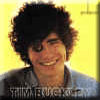 |
From
the dark media critique of “No Man Can Find the War”
to the fever-dream “Carnival Song” to the nightmarelike
junkie’s anthem “Pleasant Street” to the
positively superhuman “I Never Asked to Be Your Mountain”
(in which Buckley sounds like a 19th-century Romantic hero singing
from the top of that mountain, cape unfurling in the Wagnerian
gale) to the near-Eastern “Phantasmagoria in Two”
to the baroque “Knight-Errant” to the metaphysical
State of the Union address that is the title song to the closing,
poignant “Morning Glory,” which, of all people,
Blood, Sweat & Tears covered 20-odd years ago, this album
is a sleeper, an underrated pop classic, inspired psychedelia
at its very best. And that’s true for music and lyrics,
half of the latter by Buckley, half by his lifelong collaborator
Larry Beckett.
But
Goodbye was no introduction at all to 1968’s Happy
Sad, similar to the former only in title. Writing in the
language of drugs, as the first generation of rock critics
so often did, Goodbye’s psychedelics had given
way to Happy Sad’s heroin.
Buckley’s
voice, words, and music seem, to quote “Buzzin’
Fly” from this album, to melt “like honey in
the sun.” Instead of the orchestras, electronics, and
massive, inspired studio manipulation of the previous album,
Buckley here restricts himself to a quintet of two guitars,
congas, acoustic bass, and vibes. The music is haunting, jungle-like,
the melodic lines long and ephemeral, Buckley’s voice
swooping, hovering, screaming. And “Love from Room
109 at the Islander (on Pacific Coast Highway)” is
11 minutes of almost static sonority underlaid with the constant
sound of surf. (This was my favorite make-out album of 20
years ago.)
Happy
Sad was Buckley’s first attempt at a more jazz-flavored
music, but all of his experiments in this vein, no matter
how varied the settings, had the same strengths and weaknesses:
great sonorities (a holdover from the folkie tradition) and
tonal colors, but the music seldom went anywhere; Buckley
simply was not a jazz musician. So many times during his records,
you realize he’s holding on to a note or letting rip
with a guttural yell or a near-supersonic scream because he
probably doesn’t know what else to do, as his band cranks
on, oblivious. The folk-rock contingent of Buckley’s
fans began to hear their mothers calling. (Of Elektra’s
CD reissues, Hello and Goodbye is so far superior to
my mint-condition LP, fuzzy, boxy, with no bass, that there’s
no comparison. Happy Sad, on the other hand, sounds
virtually identical in both formats.)
 |
Whatever
its weaknesses, Happy Sad was a popular record, unlike
its far superior successor of the following year, Blue
Afternoon. This was his first on the Straight label, and
the first Buckley record I ever heard. It remains my favorite;
nostalgia aside, it stands beside Tim Buckley and Goodbye
and Hello as his best work. Buckley added a piano and
drums to his basic band, and came up with eight songs that
sound as if written from beyond the grave—music so achingly
sad, so serenely without hope, so drenched in drugged ennui
that they could be songs of a spirit wafted by his own vague
memories of his former life on earth.
I
remember wondering, when I first heard this, what price Buckley
had had to pay to be able to write such songs (Beckett was
not involved in this one). They were that powerful back in
’69, more so five years later, when Buckley OD’d,
and almost too painful to listen to today. In a just universe,
“Happy Time,” “Chase the Blues Away,”
“I Must Have Been Blind,” “So Lonely,”
“Cafe,” and “Blue Melody” would
all be instant classics, folk torch songs.
But no one ever sings them; no one ever did. This music could
have been written at almost any time, and is therefore timeless.
Blue Afternoon was terribly recorded: too distant, too dry,
too rolled-off in highs and lows. The CD improves over the
LP somewhat in the highs, but the LP’s bass still wins.
But musically a winner—when Lee Underwood’s vague,
distant, smoky piano starts off “Blue Melody,”
the Café Rick is still open, and Bogie’s still
leaning on the bar, looking miserable through clouds of nicotine.
And just as Bogart will always be walking off into that final
fog, so Buckley will always be singing this song.
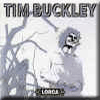 |
The
less said about Lorca, Buckley’s 1970 contractual-obligation
album to finish out his Elektra agreement, the better—he
sounds as if he was making it up in the studio as he went along,
stoned out of his gourd. Lorca remains in the vaults along with
his first album, and should probably stay there. No tunes, no
arrangements, ridiculous lyrics, and an incompetent band. Buckley’s
fans rightly stayed away in droves. [Editor's
note: Richard did later modify his opinion of the songs on Lorca.
See his 1994 review of Tim's
Live at the Troubadour 1969]
But
awful as Lorca is, it was still more accessible than
the truly avant-garde Starsailor, which, if hardly
easy on the ears, is still often interesting. Buckley considered
this his best work, though few would agree (I don’t).
Static, atonal tone clusters abound, with dolphin-shouts,
electronics, high guitars, and horns wailing like Penderecki
as Buckley whispers, whoops, and hollers. That said, this
is the only one of Buckley’s late albums that fully succeeds
on its own harsh, stark terms.
Buckley’s
notes for the title cut are instructive: “Harmonic structure:
a set of horizontal vocal lines is improvised in at least
three ranges, the vertical effect of which is atonal tone
clusters and arrhythmic counterpoint. Performance: the written
melody is to be sung, after which the lines of lyric are to
be reordered at will and sung to improvised melody, taking
advantage of the opportunity for quartertones, third note
lengths, and flexible tempo.”
This
is a pretty accurate description of what actually happens
in the grooves, right down to the almost total lack of any
kind of emotion or heart. Whether or not you are at one with
the free-blowing mentality is a matter of taste and sensibility.
This a-human album brings up images for me of bright, brittle
insects toiling over rocks under a desert sun. But, pasted
like a daub of aromatic ointment on the back of a giant, meticulously
glittering fly, we find “Moulin Rouge,” a
charming little toy song in bad French, 1:57 of gamin grace.
Enigma Retro’s CD has more highs, but they don’t
sound real; as if someone had turned the Treble knob all way
up. The LP is deeper, rounder, the CD more spacious but flatter.
But
with Starsailor, Buckley had put the royal kabosh on
whatever following he’d managed to keep. Wryly bemoaning
this in an interview at the end of his Elektra contract, he
said, “The way Jac [Holzman] had set it up, you were
supposed to move on artistically, but the way the business
is, you’re not. You’re supposed to repeat what you’ve
done before, and there’s a dichotomy there.”
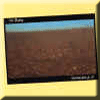 |
No
shit. Buckley found himself without an audience, and it was
a good two years before he released the almost abjectly commercial
(by comparison) Greetings from L.A. in 1972. Musically,
the album was definitely a compromise, produced by Jerry Goldstein
with a bunch of crack L.A. session players and back-up singers
(Clydie King, Vanetta Fields, etc.). With the exception of
the acoustic “Hong Kong Bar,” the tunes were
all slickly funky-tonk R&B, with L.A.’s version of
the Muscle Shoals rhythm section and the occasional string
arrangement, and wouldn’t have been out of place on an
Al Green album; Buckley stayed with this very professional,
though not very challenging or interesting, General Business
Band instrumental sound through the end of his life. The lyrics,
however, were a very different story.
From
Happy Sad on, Buckley’s lyrics had been entirely
pagan, having nothing to do with Judeo-Christian notions of
guilt, remorse, good, or evil. As he sang on Blue Afternoon’s
“So Lonely”: “No pretty ladies, no pretty
boys . . . ”—songs and singing embodied
pure sensualism, an omnisexual amorality with none of the
tender deference of Tim Buckley’s love songs, or the
social conscience so brilliantly displayed on Goodbye and
Hello.
No,
these were the words of a man in thrall to his appetites;
those hungers reached a leering high (or low, depending on
your sensibilities) in Greetings from L.A., which,
except for “Nighthawkin’ “ (a rollicking
tune about a crazed Vietnam Vet holding a knife to the taxi-driver
narrator’s throat, hoping to “kill a gook before
dawn,” Clydie King wailing in the background; and this
sounds like a happy song, believe it or not), is about nothing
but sex; the few mentions of “love” couldn’t
be considered anything but bullshit foreplay. And Buckley
waxes graphic, even to the titles: “Move With Me,”
“Get On Top.”
What
can you say about an album that opens with these lines: “I
went down to the Meatrack Tavern and I found myself a big
ol’ healthy girl. Now she was drinkin’ alone, aw
what a waste of sin”? The album was notorious for its
X-rated lyrics—“like a bitch dog in heat,”
“beat me, whip me, spank me,” “lick around
the stretchmarks”—which many—including virtually
all of his female fans, in that age of burgeoning feminism—found
offensive; no surprise, it got almost no airplay.
But
Buckley sang on in gutter glossolalia, having a high old time,
sounding as if looped on some evil gumbo of rum, codeine,
and smack, dripping greasy sweat, sounding as richly rotten
as early-’70s Saigon. Halfway through this record, my
fiancée called out from the bathroom, “Has he
come yet?” Not for everyone, believe me; the world will
seem a seamier place when the record’s over. The original
Straight LP is far superior to the Enigma CD, with that great,
fat, early-’70s electric bass; the CD’s sound is
just plain skinny.
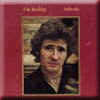 |
Sefronia,
which followed in 1973, was a much more engaging, friendly
sort of record. Though Buckley’s promoters called it
“his most eclectic,” the album sounds to me more
like a standoff between the singer-songwriter and his producer,
ex–Mamas & the Papas Denny Randell: you get a song,
I get a song. This is the only Buckley album with covers of
other writers’ tunes, and there are no less than five,
starting out with “Dolphins,” by Fred Neil,
the composer of “Everybody’s Talkin’,”
a fellow junkie and the only other folkie with a vocal style
similar to Buckley’s.
It
works. But Buckley’s duet with Marcia Waldorf (who?)
on Randell’s “I Know I’d Recognize Your
Face” is disastrous, Buckley phoning it in; he’s
barely audible in the mix, and sounds embarrassed. “Peanut
Man” is Buckley’s rather labored and overproduced
answer to Harry Nilsson’s “Coconut,”
but his cover of Tom Waits’s “Martha” toes
a thin line between getting more out of the song than Waits
ever did, and sounding uncomfortably like late Neil Diamond.
“Stone in Love” has a great, lopsided groove,
and the album closes with what is probably my favorite version
of the traditional “Sally Go ’Round the Roses,”
here severely modernized.
But
Sefronia’s centerpiece is the titular diptych,
two impressionistic panels about two black women named Sefronia,
one a slave in the US, the other an African maiden in shells
and feathers who has captivated a young black king. This is
Buckley at almost his best, crooning a hot-beach reverie that
sounds half dream, half reality. The CD is “cleaner,”
more analytical, but this is hardly “clean” music;
the LP (all of these LPs are out of print, by the way) hangs
together more as a cohesive, musical whole.
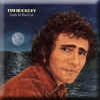 |
The
same LP/CD comparison is true of Look at the Fool,
Buckley’s final album, recorded and released in 1974.
Followers of Paul Butterfield’s post–Better Days
records will be on familiar ground here, as Buckley mixes
slick good-ol’-boy production values with his by-now-patented
south-of-the-border ambiance, sounding as if crazed on wormy
mescal on the fourth day of a three-day drunk, when the whores
look as bad as you feel. “Tijuana Moon” and
“Mexicali Voodoo” are filled with border-town
fever, dark drugs, and danger.
For
all that, Look at the Fool is a refined, more efficient
Greetings from L.A., and not half as disturbing. The title
cut turns the sea into a vast ironic being sighing these words
with the hushed voices of women: “Look at the fool love
brings me.” It’s a nifty conceit, and works like
a charm. And the hand-clappin’ “Wanda Lu,”
had it been released 15 years earlier, might have become a
high-school rock classic like “Gloria” or
“Louie Louie.” I found myself singing this
one years after the last time I’d played the record.
Who knows if it’s good or not? Can’t get it out
of my head.
Tim
Buckley wrote only three songs in his life, as far as I know,
that were not about himself and his women: “No Man
Can Find the War” and the title cut from Hello
and Goodbye, and “Down in the Street”
here. This one’s about summer in the city: riots, rent-control
demonstrations, murders, drug-dealing, and rock festivals
(1974, remember): “All through the night you hear gunshot
warnings; This time it wasn’t you. Paid your dues.”
But
Look at the Fool is short, clean, and slight, a clearing
of the palate before a second course that never came.
The
recorded life of Tim Buckley is a frustrating thing for a
writer to wrap his word processor around: so much talent so
young, wasted so soon; so much all-encompassing vision brought
so despairingly low. What’s left us are the first two-thirds
of a cycle that most artists go through at least once: early
inspiration, middle cynicism, and late wisdom.
Whether or not Buckley had his best work still ahead of him
when he died is something we’ll never know; such projections
were made of so many ’60s rock musicians who never again
captured more than a hint of their first glory that I’m
cautious not to mourn too much. Consider his life and career
a cautionary tale. Too often, you hear Buckley’s effort
at recapturing his former grace, not the grace itself. What
makes him fascinating is how many different ways he tried
to get back there, giving his all every time but one. Few
rock survivors have shown such guts.
And
just one more thing, dear reader. As of press time, Enigma
Retro has just announced a 2-CD set of live Tim Buckley material,
recorded in 1970 at the London Palladium; release is scheduled
for the 26th of this month. And, as yet more previously unknown
in-concert tapes have just been discovered, there might be
another disc after that. These will be the first “new”
Tim Buckley recordings in 16 years. Perhaps it isn’t
quite “Bye bye, baby,” after all. Thanks, Enigma.
Keep up the good work.
First
Published in Stereophile, March 1990, Vol.13 No.3
COPYRIGHT © 2013 by Source Interlink: Enthusiast Media
Group
261 Madison Avenue, 6th Floor, New York, NY 10016
(212) 229-4896, (212) 886-2809 fax
www.stereophile.com
[NOTE:
Some of these re-issues are long longer available on CD. However,
many of the albums in this review can be purchased on 180g vinyl
from Runt/Four
Men with Beards]
TIM
BUCKLEY: Hello Goodbye
Elektra 74028-2 (CD only).
Jerry Yester, recording dir.; Jac Holzman, prod. sup.
AAD. TT: 42:53
TIM BUCKLEY: Happy Sad
Elektra 74045-2 (CD only).
Bruce Botnick, eng.; Jerry Yester, Zal Yanovsky, prods.
AAD. TT: 44:45
TIM BUCKLEY: Blue Afternoon
Straight/Enigma Retro 7 73504-2 (CD only).
Dick Kunc, eng.; Tim Buckley, prod.
AAD. TT: 39:56
TIM BUCKLEY: Starsailor
Straight/Enigma Retro 7 73505-2 (CD only).
Stan Agol, eng.; Tim Buckley, prod. AAD. TT: 36:04
TIM BUCKLEY: Greetings from L.A.
Straight/Enigma Retro 7 73506-2 (CD only).
Stan Agol, Chris Huston, engs.; Jerry Goldstein, prod.
AAD. TT: 39:43
TIM BUCKLEY: Sefronia
DiscReet/Enigma Retro 7 73508-2 (CD only).
Kerry McNabb, Larry Hirsch, Roy Cicalo, Greg Venable, Roger
Dollarhide, engs.; Denny Randell, prod.
AAD. TT: 38:26
TIM BUCKLEY: Look at the Fool
DiscReet/Enigma Retro 7 73509-2 (CD only).
Stan Agol, eng.; Joe Falsia, prod.
AAD. TT: 34:22
|